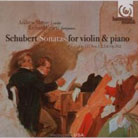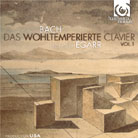November 2007
The violinist Johanna Martzy and the pianist Jean Antonietti provided an enduring benchmark in the early 1950s, in their EMI recordings of all six of Schubert’s works for their instruments. Just last year Newport issued an attractive set with Arnold Steinhardt and Seymour Lipkin. Manze and Egarr make less, perhaps, of the music’s Gemütlichkeit, focusing on its somewhat unexpected boldness. Using instruments from Schubert’s own time, they do not neglect the material’s lyric character, but they bring out a level of assertiveness that seems to explain the impulse to produce such works. I hope they will get round to the Fantasy in C (actually the grandest of Schubert’s duo sonatas) and the expansive Rondo in B minor. Meanwhile, these vigorous, affectionate performances are enhanced by first-rate sound and Manze’s own very enlightening annotation. Through mid-November Manze and Egarr are performing in 11 US and Canadian cities. In time for their arrival, Harmonia Mundi has brought out the Schubert CD and Egarr’s stimulating account of The Well Tempered Clavier, Book I, played on a 1638 harpsichord "in Bach’s own tuning." In contrast to the Schubert works too seldom heard, this set shines revitalizing light on music we may have thought we knew inside out, but which is always loaded with surprises. GO BACK TO: |
 Schubert - 3 Sonatinas, Op. 137; Sonata in
A, Op. 574
Schubert - 3 Sonatinas, Op. 137; Sonata in
A, Op. 574 Bach
- The Well Tempered Clavier, Book I
Bach
- The Well Tempered Clavier, Book I